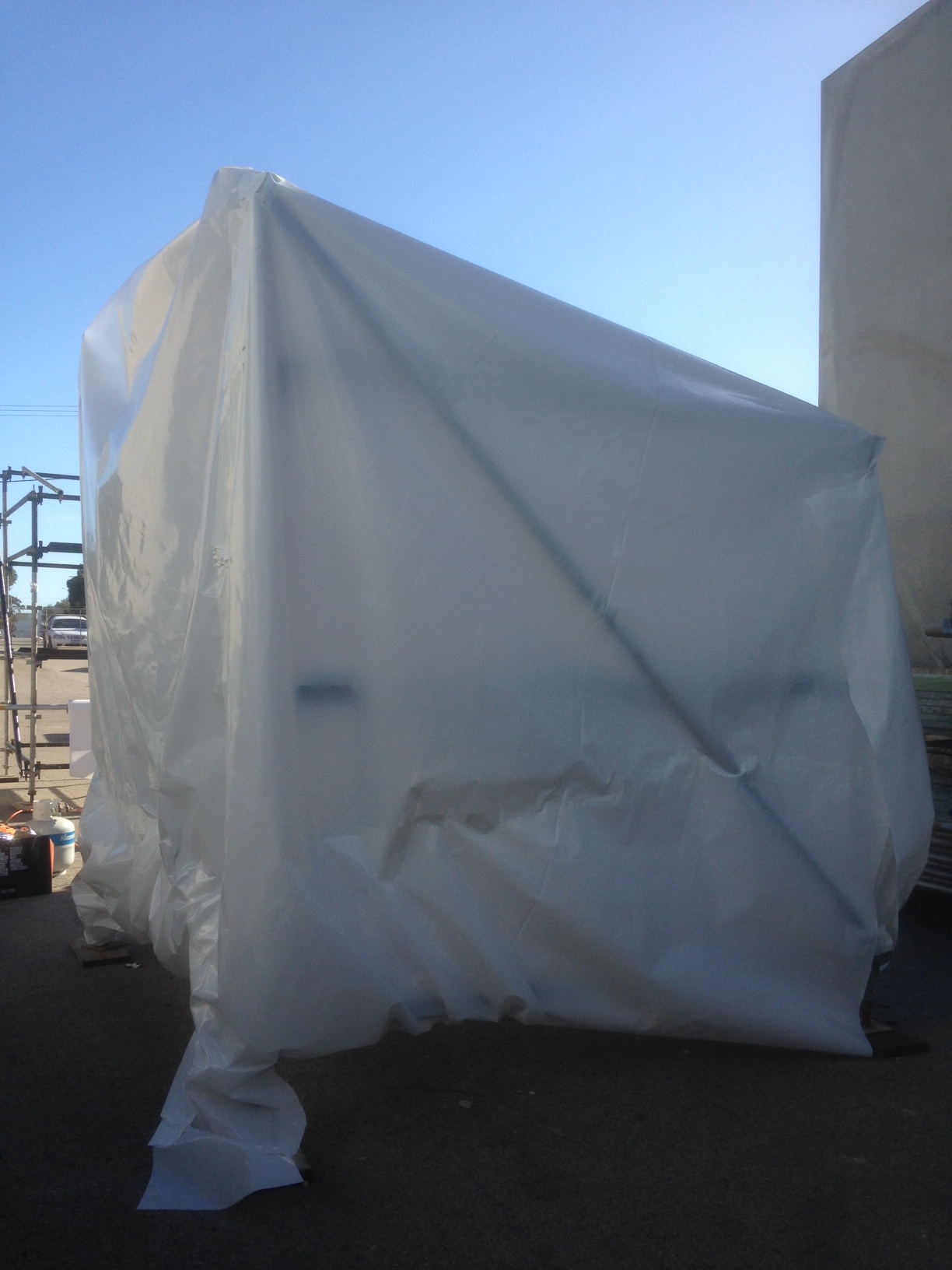Mr. Scaffold is a specialist scaffolding hire services provider, with a history of working with some of the largest companies and joint ventures in Australia. We pride ourselves on providing an efficient, safe and reliable service. Mr. Scaffold does not use sub-contractors for our work, and dedicates time and resources to keeping our team trained and certified in all the necessary qualifications. Normally this is focussed on the skills that are directly related to scaffolding: Confined Spaces, Rail Industry, Working at Heights etc.
Our team in Western Australia is going to need to do some work in the near future where the scaffold will need to be encapsulated. Mr. Scaffold does not normally carry out this process, so there was a need to ensure that all our personnel where familiar with the skills and procedures involved. A sample scaffold was created in the yard at our Henderson Depot. The Training scaffold was created so that the “roof” of the section has a noticeable angle to it, with ledgers that follow this angle. This helps produce a fall of sufficient level to allow any rain to run off the encapsulation and not gather in pools. Though the plastic that forms the ‘skin’ of the encapsulation is quite strong, water can gather in large quantities and test the integrity of almost any material.

 Those amongst you who have been camping in the rain will no doubt have had the experience of a tent roof that was not sufficiently taut, and a pool of water then gathers, deepening the valley in the material and inviting more water to gather. The resulting weight of water is invariably too much to lift, or eventually, some part of the material fails, causing a flood into the previously protected area. The encapsulation that Mr. Scaffold is anticipating the need for would be protecting areas that would not benefit from the introduction of an influx of rainwater.
Those amongst you who have been camping in the rain will no doubt have had the experience of a tent roof that was not sufficiently taut, and a pool of water then gathers, deepening the valley in the material and inviting more water to gather. The resulting weight of water is invariably too much to lift, or eventually, some part of the material fails, causing a flood into the previously protected area. The encapsulation that Mr. Scaffold is anticipating the need for would be protecting areas that would not benefit from the introduction of an influx of rainwater.
Mr. Scaffold training on the encapsulation process included the bonding process using tape that although it appears similar to the normal “duct tape” that was primarily developed for ventilation, this tape has been developed to deal with the “shrinking” process of heat application to keep the encapsulation tight to the scaffolding framework. The individual sheets of the cover are actually “heat welded” together, the tape acting as a facility to keep the sheets in place for the heating process. Similarly, the addition of ventilation and access ports within the membrane is achieved by heat welding pre-formed zipper pieces into the sheet. This allows sturdy and purpose built access for each section or encapsulated area.

 Although this is a simple process, the way that the sheeting shrinks, the requirements for the edge of the scaffolding to be square, without ledgers or transoms extending beyond the presented face, and the fact that the best results are achieved with only one application of heat to a specific area meant that a training run for our team makes for an efficient operation on the real project.
Although this is a simple process, the way that the sheeting shrinks, the requirements for the edge of the scaffolding to be square, without ledgers or transoms extending beyond the presented face, and the fact that the best results are achieved with only one application of heat to a specific area meant that a training run for our team makes for an efficient operation on the real project.
Encapsulation is designed not only to prevent the ingress of rain into sensitive or uncovered areas, it is also used to prevent the debris, dust and particulate of some of the maintenance activities from escaping into the atmosphere or surrounds. This way the client can have an area blasted, coated or treated without worrying about the effect on the surrounding area or environment.
Rest assured that the sheeting used for this sort of project, though it is heat reactive, remains flame retardant. Mr. Scaffold is looking forward to the project that this training was intended for, though the encapsulation will only be a small part of the whole. The important part of this build will be the construction of the scaffold that will be encapsulated. The increased surface area that is presented by the encapsulation sheeting requires that the scaffold be built to withstand any weather conditions that occur whilst the scaffold is erected in this extremely exposed position.

 We are confident in our teams ability to complete this task quickly and efficiently.
We are confident in our teams ability to complete this task quickly and efficiently.



